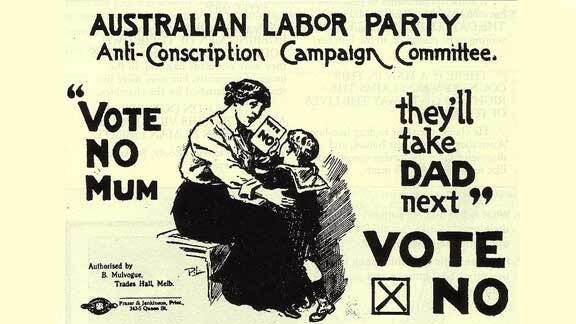Australia's hidden history of World War I

Anzac Day marks the first involvement of Australian troops in the First World War, and has become a major event on the nationalist calendar. The Australian War Memorial says it commemorates the “spirit of Anzac, with its human qualities of courage, mateship, and sacrifice, [which] continues to have meaning for our sense of national identity”.
Robert Bollard’s In the shadow of Gallipoli: the hidden history of Australia in World War I is not the first book to challenge Anzac mythology. In the last few decades a host of books and articles have looked at different aspects of the topic. However, Bollard takes a different approach, focusing on the Australian domestic experience during the war, and particularly on the labour movement.
“Under the shadow of Gallipoli lies the real truth about World War I”, he writes. “This was a crucial period in the formation of the Australian working class, of the labour movement which defined Australian politics and society in the turbulent twentieth century … [T]he lessons learned in these years would remain etched into the collective memory of Australian workers for most of the twentieth century.”
Bollard’s book is a fascinating and enjoyable history of this “other” Australia during the war. Australia in 1914 had some of the highest rates of unionisation in the world, and workers had won a reasonable standard of living. But the outbreak of hostilities changed this. The country experienced a recession early in the conflict, and inflation reduced the value of wages: between July 1914 and May 1915, food prices rose by one-third.
These realities weighed heavily on the working class, in spite of the enthusiasm that may have met the outbreak of hostilities (although Bollard makes a compelling case that the initial working class enthusiasm for the war has probably been overstated).
As early as September 1915, there was a successful strike movement in Broken Hill, which set off a broader strike wave that culminated in the Great Strike of 1917. Bollard is an adept and colourful storyteller; the book is an absolute page-turner. Among the tales of victories and losses, he weaves an engaging narrative of a working class upsurge and its intersection with broader political questions such as the conscription referenda.
Bollard’s focus on the labour movement is deliberate, and it sets him apart from historians who have looked at the referendum campaigns or the peace movement as discrete topics. The argument Bollard is making is about class: Australia was (as now) a class-divided society, and the rich sought to profit out of the war at the expense of the working class. Workers responded with militancy, which transformed the political landscape. Far from a simple tale of mateship and courage, the First World War revealed deep and bitter class divisions.
The book explores the political development of organisations such as the the Women’s Political Association, the Victorian Socialist Party and the Industrial Workers of the World, and the leading activists of the time, such as Adela Pankhurst, Tom Walsh and the Broken Hill unionist Percy Brookfield.
This period was one of the most radical in Australian history, as the war and working class struggle left many questioning the organisation of society and looking for alternatives. Bollard tells the story of a circular found among returning troopships in 1919, which called on soldiers not to fire on members of the working class. The European radicalisation that resulted in the Russian and German revolutions had a great impact on soldiers of all nations.
He is careful not to overstate the process and explores its limitations, but the point is pertinent: the First World War brought out not just working class militancy, but political radicalism as well, and this would leave an impression for many decades to follow.